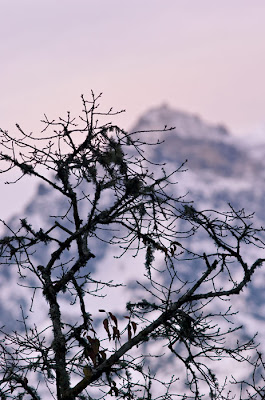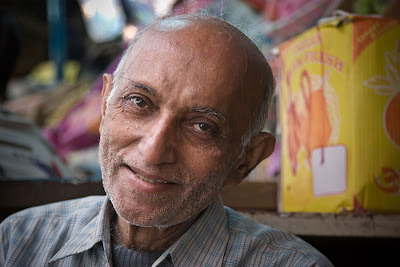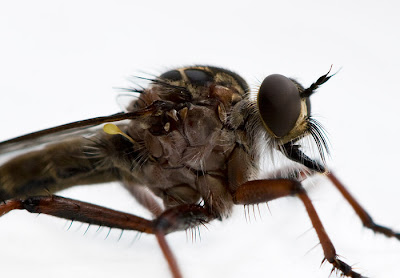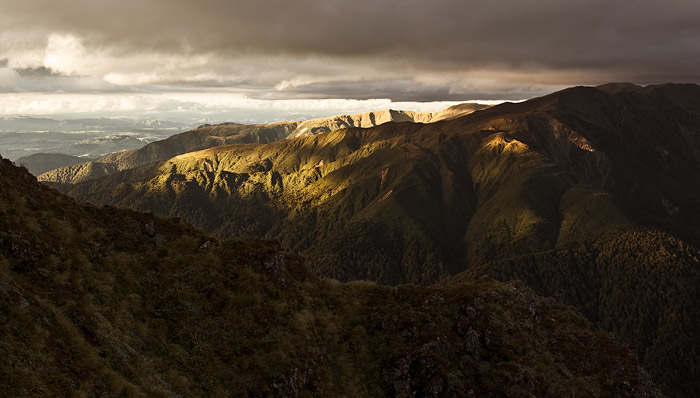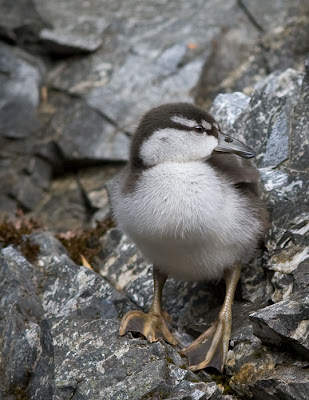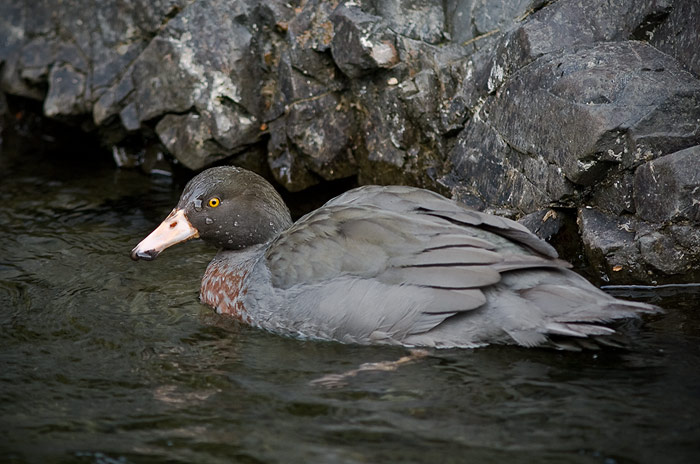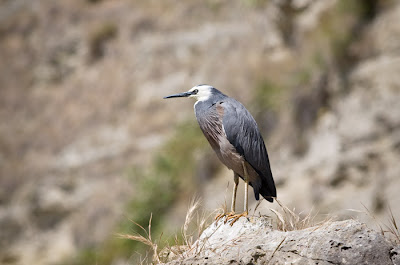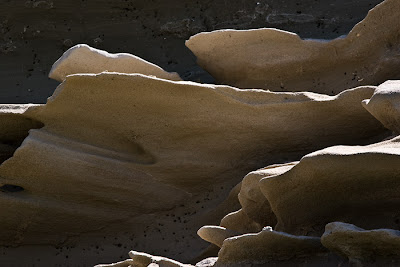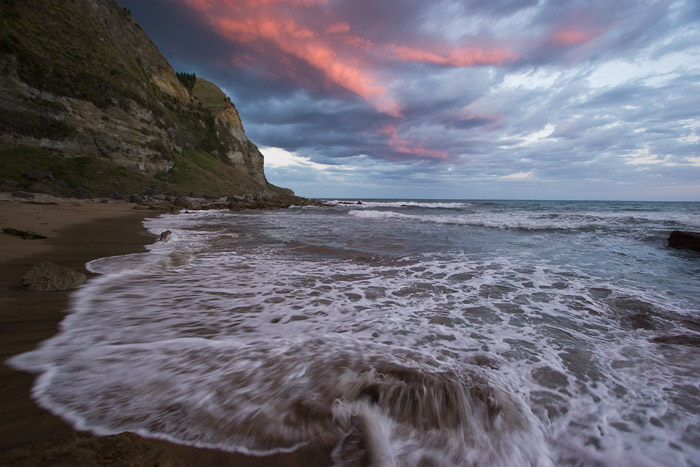
Here at Leon Kinvig hut I settle in for the evening; wait for the billy to boil for an after-dinner brew. I'm here because the tops South of Toka were enveloped in cloud — lifting and lowering, to be sure, but mostly it stayed well below the ridgeline and I didn't want to risk losing my way to my original goal, Ngamoko hut. In that murk, losing my bearings would have been too likely. So, here I am, doing the walk in the other direction.
The billy's boiled.
I trudged my way up Knights Track, stopped for water and a muesli bar shortly after reaching the snowgrass, again for photos above the tarns on the summit of the Ngamoko Range just East of Toka, and arrived here at the hut comfortably in a bit over three hours.
Then it took me most of an hour to fix the leaking on-off valve on the MSR. I thought about lighting a fire instead, but persistence paid off and I managed to get it running safely.
The hut's been painted, only a few weeks ago; a pleasant two-tone scheme in dull greens, one pale, approaching grey-green, the other a darker muted green. I prefer this over the the old reddish-brown.  Outside, the wind, as always here, and the sound of the river, the two merging. Which is wind, which is river? I can't tell, and don't care — I simply like the sound; it tells me where I am.
Outside, the wind, as always here, and the sound of the river, the two merging. Which is wind, which is river? I can't tell, and don't care — I simply like the sound; it tells me where I am.
The flowers of Clematis festoon the bush, looking strangely incongruous, as if some god had strewn sprays of the big white-and-yellow flowers at random on her journey down the valley. A quarter past eight. Slowly, the light begins to fade. Big spiders hang in their webs — enormous, bloated, gravid Eriophora — while the gibbous moon hangs in the evening sky, framed by the silhouettes of stag-headed beeches. The cloud has cleared completely now; in the South-West the sky's taken on that indescribable, brilliant colour which seems to be no colour at all, not even white, just the colour of the concept of light. Further North, the darker sky's tinged with the faintest imaginable trace of salmon-pink; the moon brightens, burns in the evening. I stand on the verandah, warm boards beneath bare feet, hands cupped around the mug of tea. Taking sips, looking up at the moon; just the spiders and me. Thinking, if anyone saw me they might think I'm praying to that brilliant moon. Here, at home among the simple and elemental, I might almost feel the urge to do that — to pray.
But I watch instead; finish my mug of tea; go inside and write. If I could remember how to pray, I wouldn't know who, or what, to pray to. But, if I did, it wouldn't be to ask for anything for myself, other than to let my life continue as it is.
...
About 10 minutes downriver from Leon Kinvig hut a deer barks at me. Close. Out of sight, of course. The sound again, somewhere between the woof of a dog and a cough, but louder than either. Much louder, filling the forest. As I continue down the river, hopping from boulder to boulder, wading limpid water, sometimes thigh deep, I can follow the deer's progress by locating its bark — following me downriver but climbing higher into the forest, always out of sight.
The small, coarse-sand beaches disclose other signs of deer, too — hoofprints, some not more than a night old. That's a stag — you can tell by its size and shape, broader, with a more prominent heel than the print of a hind. And that must be a yearling, judging from its size.
Footprints, annotations in the sand, tell of other lives too. Below Leon Kinvig hut I found a few prints, several days old; prints that say whio, the only sign I've seen so far of these strange, beautiful birds.  Here and there, possum prints, and, only 10 minutes or so from Ngamoko hut, suddenly I come across a bootprint. It looks fresh. Surely no one else is here, mid week? A slight trace of apprehension creeps in — if someone else is here, he's probably hunting, and not likely to be expecting anyone else. I think about donning my hi-viz vest, but as I find more bootprints it becomes clear they're several days old.
Here and there, possum prints, and, only 10 minutes or so from Ngamoko hut, suddenly I come across a bootprint. It looks fresh. Surely no one else is here, mid week? A slight trace of apprehension creeps in — if someone else is here, he's probably hunting, and not likely to be expecting anyone else. I think about donning my hi-viz vest, but as I find more bootprints it becomes clear they're several days old.
At Ngamoko the hut book reveals a surprising amount of activity: a hunter and his dog here for the day, up from mid Pohangina hut; Jean and Ivan were here last weekend; Kay and Phil here the Monday before that, passing through en route from Leon Kinvig to mid Pohangina. Two hunters here a few days before Phil and Kay, returning to Leon Kinvig. But before them, apparently no one has been here since April; Ngamoko has been deserted (apparently) for seven months. A year ago I was in the Indian Himalaya, where the idea of being alone for even a day was inconceivable. Here, seven months of solitude. In my seven months in India and Africa I never lived a day without meeting another human being. Usually, many human beings. To be born and raised in India, or Ghana, or Malawi, for example, must be to grow up with no concept of solitude, let alone seven months of it. Nor of clean, clear, safe water — in a global context, this achingly beautiful river must be like a dream. Such things are possible.
Am I the luckiest person alive? By what right did I earn this privilege?
But Ngamoko hut's solitude must be at least partly false. Someone's been here but shunned the hut book. Two almost-empty flagons, one of Jim Beam, the other of generic ruby port, sit in the alcove above the door, and a bag containing half a dozen sprouting potatoes hangs from a wall-mounted candle holder. Hunters, I guess; flown in, for sure — no one carries in flagons and bags of potatoes. Still, they'd have been here during the roar, around April; maybe May at the latest, so the seven months of solitude seems intact. And it seems they left the hut tidy, too, as none of the subsequent visitors noted anything untoward— unlike the scum who cut up their deer inside Leon Kinvig hut, crapped right outside the hut, and left the filth for the next party to clean up.
Try not to think about it.
So, I have Ngamoko hut to myself after all. The meander down the river, in no hurry, stopping for photos, taking my time, took about 3 hours. You could do it in under 2 if speed's important, but for me it wasn't. I took my time, crossing and recrossing the river through water hardly cold enough to be called cool; beautiful clear water, green in the big,  deep pools, colourless where shallow, the ripples forming a network of light on the gravel bed, as if the water wasn't even there. Toetoe and cutty grass bending in the wind, white water rushing, pale grey riverbed boulders bright in the midday sun.
deep pools, colourless where shallow, the ripples forming a network of light on the gravel bed, as if the water wasn't even there. Toetoe and cutty grass bending in the wind, white water rushing, pale grey riverbed boulders bright in the midday sun.
In the warm hut the light begins to fade; dusk settles. But the clear, infinite light of last night has been replaced by ominous clouds, thickening to overcast. What if the weather's ugly tomorrow? Do I still try to get out over the tops? I've done it before, but I was fitter then, with more margin for error, or at least more with which to battle the gale, the bitter cold, the poor and confusing visibility — and believe me, it's not to be taken lightly. I've been there, I've been disoriented up there in those conditions several times. I know how to survive, but tomorrow I don't want to have to employ those skills nor call on that experience. What should I do if the weather's bad? If I navigate without error I'll make it regardless of the conditions, but what if I head down the wrong spur? Should I, therefore, if the weather's bad, retrace my steps all the way to Leon Kinvig and cross the Ngamoko Range the way I know well? The thought's daunting, but at least I'd be certain of getting out (barring mishap) — shattered, for sure, but safe and on time.
I can't make the decision now. Wait for morning, assess the weather then.
And I don't want concern about tomorrow to detract from today. It's been an excellent one, and I've made it back to one of my favourite places in the Ruahine, after 22 months — 22 months that included time in India, Nepal, Africa, the UK, Paris. Time during which I often thought ahead to  doing exactly this — putting a pack on my back and heading into the Ruahine; meeting no one. Solitude. Remoteness. Like stepping out of the imaginary world and into the real.
doing exactly this — putting a pack on my back and heading into the Ruahine; meeting no one. Solitude. Remoteness. Like stepping out of the imaginary world and into the real.
I write this by candlelight, in a darkening hut, the sound of the wind and the river coming and going.
And now — the sound of a whio, whistling in the river.
Grabbing the binoculars I make my way down the track to where I can see the river. I whistle — I'm here; please, speak to me. Immediately he answers, and the sound draws my focus to the middle of the pool, a dim shape, the distinct pale bill. I watch through the binoculars as he swims about, head stretched low over the water as he whistles. A little way upstream, then he turns and drifts, quick, bobbing, downstream, where he circles and whistles. He swims to the near edge of the pool, climbs onto a rock, turns this way and that a few times, then slips back into the pool.
I watch, with a tightness in my throat, the beginnings of tears behind my eyes.
I remember the Maharaja of Jamnagar, his love of his birds and his wildlife, his particular knowledge of and love for whio. How can this be possible — the impossible coincidence of our meeting? Part of the reason I came here, carrying the big lens, all one and a quarter kilos of it and the camera and other lens to boot, was the hope of a good photo of a whio, least in part so I could send my friend a print.
But photography's out of the question. Even through the brilliant Swarovskis the whio appears like a dream, intense yet indistinct.
It's enough. I've seen a whio; I've met my friends again.
As I climb back to the hut a ruru begins to call.
...
Shortly after 5 a.m. dawn begins to lighten the hut. When I crawl from my sleeping bag and check the sky, the decision, like the sky, is clear. I'll go out over the tops.
I'm away by 7, feeling strong, climbing fast and steadily, slightly surprised at how good I feel, the great energy. When a stag bearing a good head of velvet crashes away across the track no more than 20 metres ahead, I almost feel like bounding after it.
On the tops, though, the visibility's poor, down to a few hundred metres, and I'm relying on vague episodic memory, the recollection of the last time  I walked this route, several years ago, and last night's working memory, recalling the scrupulously studied map on the hut wall. I walk steadily, carefully, methodically, not pushing too hard in the strong, cold wind. Near Whaingapuna the first decision's easy enough although I still feel a trace of anxiety — what if I'm wrong? Where might I be heading? I console myself with the knowledge that I know what to do — park up and wait; keep warm; I know R will do as I've asked and call the cops and the worst outcome will be nothing more than acute embarrassment and a little discomfort. But it's soon clear I'm on course. The anxiety sets in again later though, where the ridge seems to veer sharply to the left — much sharper than the map suggested. The alternative doesn't look right, though. I call on experience; that way seems too low, it seems to drop away too steeply. I veer left, looking back to memorise what it looks like if I have to return; again keeping the anxiety in check by reminding myself I'm in no danger other than that of the humiliation of being the object of a SAR operation or of the torment of waiting until I'm found.
I walked this route, several years ago, and last night's working memory, recalling the scrupulously studied map on the hut wall. I walk steadily, carefully, methodically, not pushing too hard in the strong, cold wind. Near Whaingapuna the first decision's easy enough although I still feel a trace of anxiety — what if I'm wrong? Where might I be heading? I console myself with the knowledge that I know what to do — park up and wait; keep warm; I know R will do as I've asked and call the cops and the worst outcome will be nothing more than acute embarrassment and a little discomfort. But it's soon clear I'm on course. The anxiety sets in again later though, where the ridge seems to veer sharply to the left — much sharper than the map suggested. The alternative doesn't look right, though. I call on experience; that way seems too low, it seems to drop away too steeply. I veer left, looking back to memorise what it looks like if I have to return; again keeping the anxiety in check by reminding myself I'm in no danger other than that of the humiliation of being the object of a SAR operation or of the torment of waiting until I'm found.
But, as the ridge rises to a low peak, I'm sure I recognise where I am. Yes! There's the main ridge, lower and off to the right. I follow it, recognising the small bank with the well-worn step — and then, a bootprint. A few more, and a vague trail. And then the waratahs, emerging from the mist. The top of Shorts Track.
...
I drove home, nursing the almost empty tank. In town in the evening I looked around at all the people doing town stuff and in some way I saw through the pointlessness of most of what was happening around me; how superficial it seemed; busy yet idle. Perhaps I hadn't really made it all the way out from Ngamoko hut after all.

Notes:
1. I'm away again for the next three days. Off to the ocean this time; a small, quiet East Coast beach. Reading, writing, photographing, eating, relaxing, conversing.
Photos (click to enlarge the smaller photos):
1. The ridge leading down to the Pohangina River and Leon Kinvig hut from just below Toka. Wednesday.
2. On Knights Track a few weeks ago. Similar weather. The dull green vegetation is leatherwood (tupare; Olearia colensoi); if there's no track through it, you're in trouble — a few hundred metres an hour is good going.
3. River terrace just upstream from Ngamoko hut, evening. This is a composite photo, stitched together from four handheld photos. The original's huge; this I've reduced to 1024 pixels wide.
4, 7. Pohangina rapids.
5. Snowgrass on the Ngamoko Range on the day I walked out.
6. The weather on the tops.
Photos and words © 2007 Pete McGregor
 bodies falling onto crash pads—small, portable, mattress-like mats used to cushion falls—punctuated the roar and hiss of breaking surf just a few metres away. Other climbers scorned mats and relied on Baring Head’s distinctive asset among New Zealand bouldering sites—the natural cushioning of the sand and fine shingle.
bodies falling onto crash pads—small, portable, mattress-like mats used to cushion falls—punctuated the roar and hiss of breaking surf just a few metres away. Other climbers scorned mats and relied on Baring Head’s distinctive asset among New Zealand bouldering sites—the natural cushioning of the sand and fine shingle.












